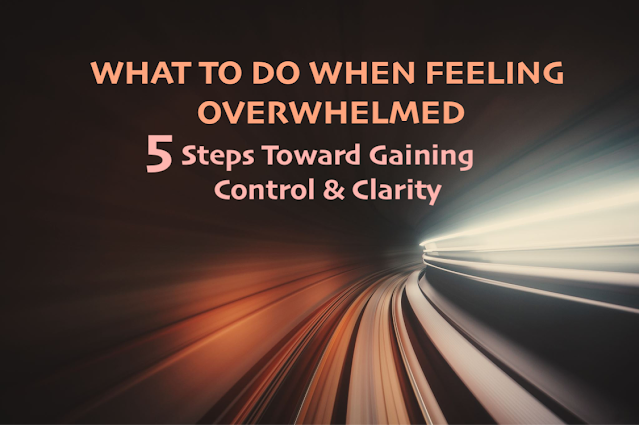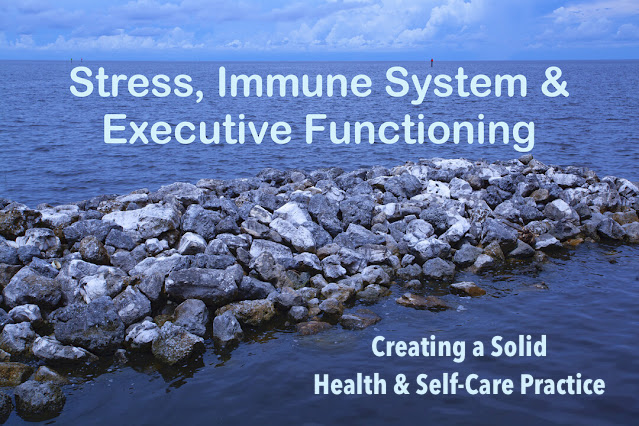PANIC ATTACK: Finding Your Calm When Profound Fear Takes Over Your Mind & Body
A bird sitting on a tree is never afraid of the branch breaking because its trust is not on the branch but on its own wings.
-Charlie Wardle
What Causes Panic Disorder?
The etiology of panic disorder is not fully understood, but it is believed to be a combination of genetic, environmental, and psychological factors.
Some risk factors for panic disorder include:
- Family history of anxiety or panic disorders
- History of trauma or abuse
- Chronic stress or major life changes
What Does a Panic Attack Feel Like?
FEELING BETTER
FEELING CALMER
Remember, one or a handful of panic attacks (spread across several years) does not meet the "frequency" requirement for a diagnosable anxiety disorder. There are millions of individuals who have experienced at least one panic attack in their lifetime. To meet diagnostic considerations, your panic attacks will need to be higher in frequency and intensity, and affect the quality of your daily life. With that said, there is a large caveat.
AVOIDANCE: Anxiety's Super Power
When anxious, there is a sense of urgency of wanting or needing to use a technique that will immediately work, and although the ones offered in this article are solid strategies, they, unfortunately, are not guarantees that the attack will stop in a timely manner. The challenge here is to simultaneously experience the discomfort and access a deeper, more rhythmic and diaphragmatic breath. Paying attention to your breathing is key to enhancing your emotional state, and the more you practice this type of breathing outside of a panic situation (such as in yoga), the more available it will be for you when in a crisis.
Is there anything you can do in the moment to decrease the attack's intensity or make it go away altogether? YES!
When You Need Relief NOW!
BREATHE
To access this breath:
1. Begin by breathing naturally for a few cycles. When ready, seal your lips and breathe in and out through your nose.
2. Inhale to contract the diaphragm to create space for your lungs to expand, and when you exhale, relax the diaphragm and gently push the air from your lungs. Think in terms of fogging a mirror.
3. Slowly and mindfully begin to lengthen each inhale and exhale to a count of 4.
4. To further elongate the breath, bring your attention to the back of your throat muscles and constrict them in order to hear a soft roar such as the sound of the ocean's waves crashing.
5. If you lose your ujjayi breath, just simply (without judgement), return to it.
GROUNDING TECHNIQUE
Grounding techniques are immediately available strategies that can help in managing the intensity and frequency of overwhelming emotions and feelings of distress, such as a panic attack. It allows you (and your brain) to step away from the negative thoughts and feelings through a distraction method using your 5 senses. This method includes firmly situating your feet on the ground, taking slow, deep breaths (as described above), acknowledging aloud or silently (if in a room with others) what is observed in the present environment, and reminding yourself that you are safe.
5. Acknowledge five things you see.
4. Acknowledge four things you can touch.
3. Acknowledge three things you can hear.
2. Acknowledge two things you can smell.
1. Acknowledge one thing you can taste.
AROMATHERAPY
Aromatherapy is the use of essential oils or other aromatic plant compounds for healing and wellness. Essential oils and their use date back to ancient times. Certain fragrances have been shown to have a clinically quantifiable effect on mood, and may help facilitate feelings of calm and relaxation through its primary processing pathway, the olfactory system.
The olfactory bulb (an essential structure of the olfactory system) is directly connected to the amygdala and hippocampus, which explains why smells and fragrances are often powerfully connected to specific memories.
For purposes of relaxation, lavender is typically the aromatherapy expert’s go-to scent. Other essential oils for relaxation include, but are not limited to:
- Rose
- Valerian
- Peppermint
- Jasmine
- Chamomile
- Ylang ylang
The AROMATHERAPY-MANTRA COMBO
HEALING MUSIC & SOUND
The Long-Term Plan
Manage your stress level.
This cannot be over-stated!
Anything and everything you do to manage the deleterious effects of chronic stress will go a long way in pushing future panic attacks further and further away. Here are some excellent ways to manage stress:
MINDFULNESS
Mindfulness, the act of paying attention to the present moment with a non-judgmental attitude, is the anti-dote to stressful and mindless living, that robs you of your joie de vivre.
When tackling, or better yet mindfully approaching, a daunting to-do list, take a long, deep diaphragmatic breath and complete one item at a time. Move on to the next after the completion of the previous item. This will immediately evoke a feeling of calm.
We all think better, more creatively, and more efficiently when calm. Calm truly is a super-power.
Additional strategies to bring about a calmer and more mindful state of mind would be to pause and ask yourself key, self-reflection questions.
Take a moment and ask questions such as:
- Do I feel connected to the present activity?
- Is this present activity energizing me or depleting me of my energy?
- How am I feeling right now?
- When I listen to my body, what is it telling me I need?
- What am I paying attention to at this moment?
- What is the rhythm of my life right now? Too fast, too slow? Smooth, irregular?
Engaging with nature nourishes your soul. Your body, hard-wired to the natural environment, needs fresh air and sunshine. Few today are reporting feeling energized, focused, and a general sense of well-being, and rates of feeling burned-out are exponentially escalating. This will increase feelings of anxiety.
Although we find peace and tranquility in natural locations, we are unfortunately spending less time outdoors, tapping into nature's rhythm and bountiful health offerings, and more time indoors, in isolation, and in front of screens.
Whether you take your lunch break strolling through a nearby park, or spend your week-ends swimming or kayaking in a lake or ocean, or dropping a line at your favorite fishing hole, going outside and experiencing fresh air will do wonders for your nervous system and spirit.
EXERCISE
NUTRITION
Numerous studies have documented the effects of a healthful diet on mental health and energy functioning.
If you are already in the habit of eating real food, mostly plant based, and in reasonable caloric portions, then continue. If not, then this may be a good time to re-assess your diet and make changes that are best for you. Dietary supplementation may be helpful, and is individual to each person’s needs. Avoid overly processed foods and sugar. Both can spike stress levels and fatigue, and increase susceptibility to disease.
Magnesium
Magnesium is a vital mineral that helps your body facilitate many critical functions. It is involved in, but not limited to, nerve function, blood sugar, and blood pressure. Magnesium has been shown to promote relaxation. In supplement form, it's known by some in the nutrition circles as the "Chill Pill."
Whether or not to include a magnesium supplement and what kind and how much will be best determined in collaboration with your physician, dietician, nutritionist, or other healthcare professional skilled in supplementation and anxiety disorders. For those who would rather get their intake through food, here is a delicious assortment of foods to incorporate into your diet.
Foods that are rich in magnesium include:
Dark chocolate
Leafy greens
Legumes
Avocados
Bananas
Fatty fish
Cashews, Brazil nuts & Almonds
Pumpkin, Flax & Chia Seeds
Caffeine
Limit caffeine intake (if anxious), especially coffee and/or caffeinated soft drinks. Instead, enjoy tea (caffeinated and herbal). Caffeinated teas, such as black and green, offer a balance of energy level, while also delivering a calming effect. If you have high blood pressure or tend to feel jittery and yet desire caffeine, black and/or green tea may be a better alternative.
SLEEP
The circadian cycle, or rhythm, is an internal, natural process that regulates your sleep-wake cycle. It typically repeats every 24-hours. Lack of restorative sleep can give rise to feelings and sensations in the body that mimic anxiety.
To maximize physical and mental health benefits, you need sleep; especially RESTORATIVE SLEEP.
Offered here are important tips for getting the best, and most restorative, sleep needed for energy and emotional balance.
- Your bedroom should be cool and dark, and free from distracting noise and devices. Some find white noise or background sounds of nature soothing.
- Dim the lights and reduce screen time a few hours before going to bed. This prepares your brain and body ready for sleep.
- Establish a relaxing bedtime routine. A nightly meditation practice can do wonders for stress management.
- Attempt to go to bed and wake up at the same time each day.
The information presented in this blog is intended for general knowledge and is not a substitute for medical advice or treatment. As with most things in life, there isn't a magic pill or "cure-all" but there are strategies to help regain control of your life. Consult with your healthcare professional to ensure that you are taking responsible steps to ameliorate signs and symptoms of an anxiety disorder.
American Psychiatric Association. (2022). Diagnostic and statistical manual of mental disorders (5th ed., text rev.).
https://www.healthline.com/health/anxiety/lavender-for-anxiety#science
If you enjoyed this article and would like to read more, then let's connect:
FACEBOOK:
Marie Therese Rogers
Life In Focus
LINKEDIN:
Marie T. Rogers, Ph.D.
INSTAGRAM:
Mariethereserogers
Find the LIFE IN FOCUS podcast on Apple and other streaming devices —> Life in Focus Podcast




























I like to think I don’t have panic attacks often. But I’d be lying if I said I’ve NEVER had one before. I remember once when I was younger and I broke my foot in a riding accident, I about passed out after the fact. I’m convinced I had one as a result. Thankfully I didn’t, but I wish I had tips like this back then to help cope with it better. Thanks so much for sharing! I’ll definitely be holding onto this!
ReplyDelete-Whitney Stewart
This is a great article full of wonderful tips. When I had my first attack I had no clue what was going on. Knowing your individual warning signs can be so helpful, too.
ReplyDeleteSuch a great post. Thanks for sharing!
ReplyDelete